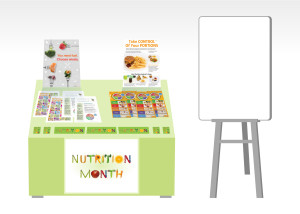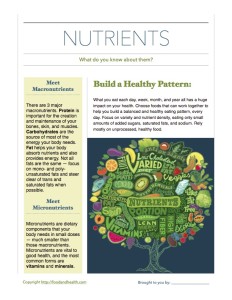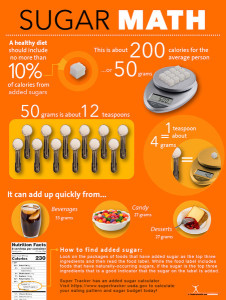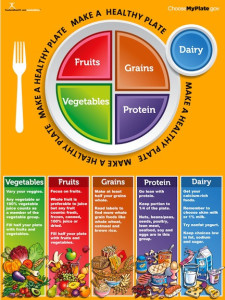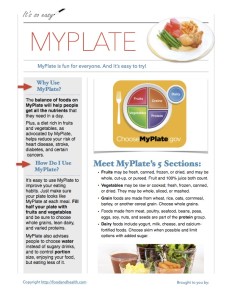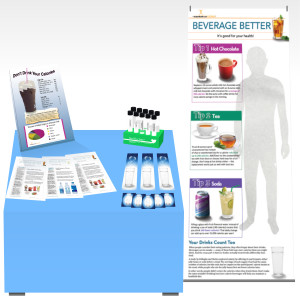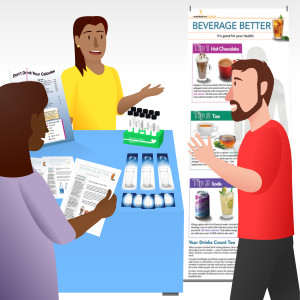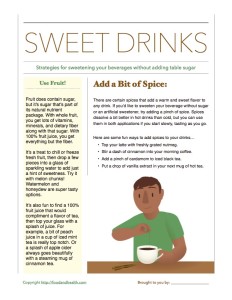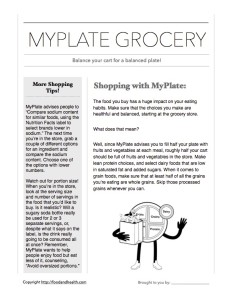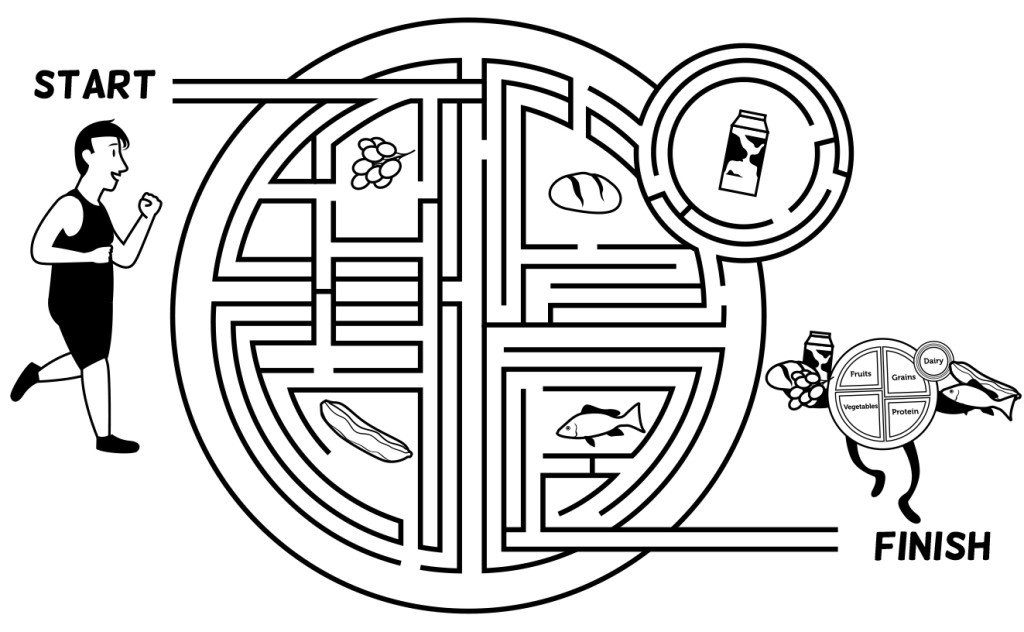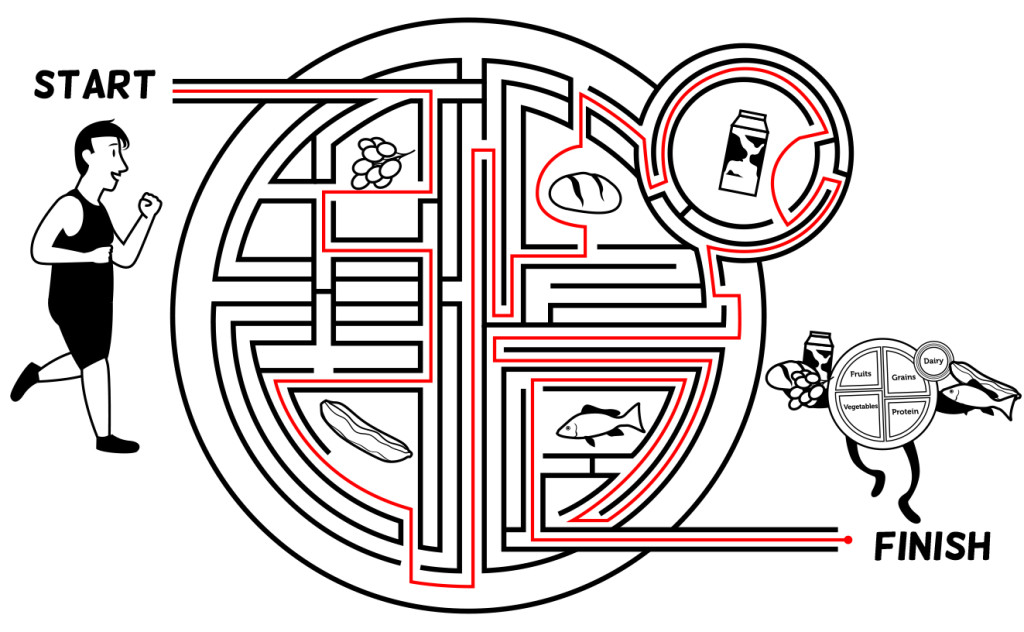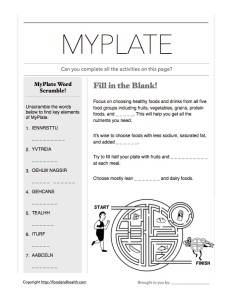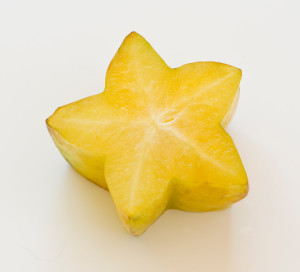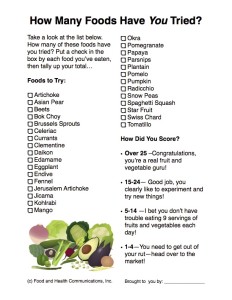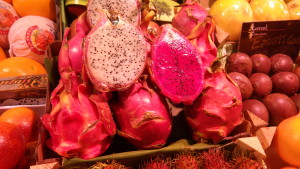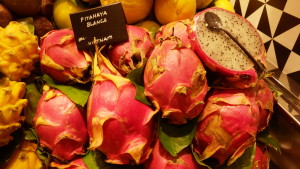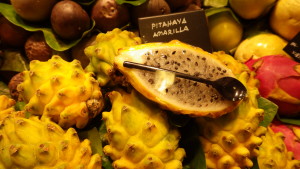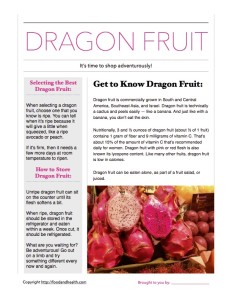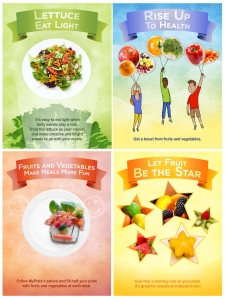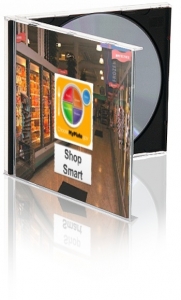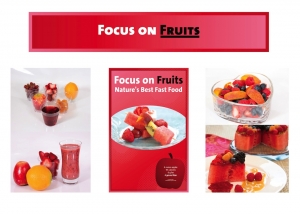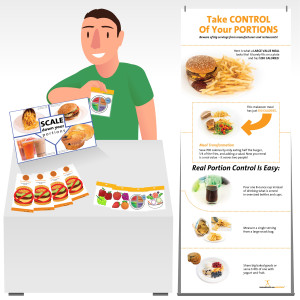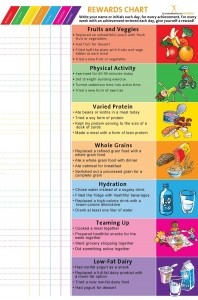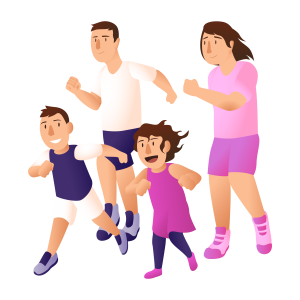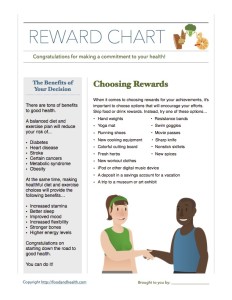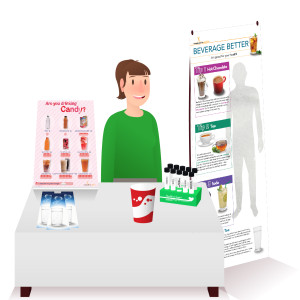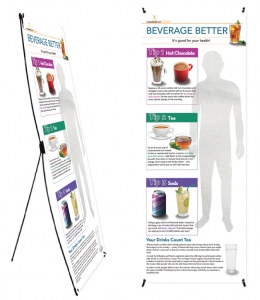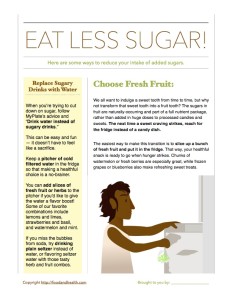It’s National Nutrition Month, and to celebrate, I couldn’t resist making a Nutrition Month display for the Nutrition Education Store’s March Display of the Month! Can you blame me? Here’s what you need to make your own display…
- Banner: Nutrition Month
- On Your Table: Posters from the Quality Nutrition Poster Set on Tabletop Easels, with a stack of Nutrition from A to Z Handouts and and some MyPlate Brochure Cards.
- Prizes: Nutrition Month Bookmarks and Nutrition Month Stickers
The Activities:
- Nutrition Month ABCs
- Brainstorming: Ways to Savor the Flavor of Eating Right
The Details:
To set up your booth, grab a table and drape the front with the Nutrition Month Banner. Top it with the posters you like best from the Quality Nutrition Poster Set. They’re all great for Nutrition Month, but I especially like the Wise Choices and Portion Control posters for this particular display. Put each poster on a Tabletop Easel in order to make it easy to see. Intersperse the educational posters with some Nutrition from A to Z Handouts and MyPlate Brochure Cards, then line the front of your table with Nutrition Month Bookmarks and Nutrition Month Stickers. Toss a whiteboard up on a stand near your display and grab a few dry erase markers if you’re going to do the activities outlined below.
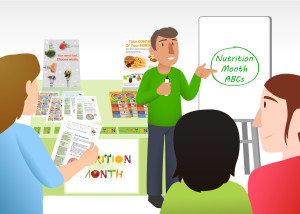 For the Nutrition Month ABCs activity, ask people to think up words that start with each letter of the alphabet, focusing on key health and nutrition information. For example, the letter “A” could feature words like “antioxidants,” “activity,” “anthocyanins,” and even “vitamin A” if the group is flexible. Discuss each word as it is offered and give prizes to the people who choose to participate. Pass out copies of the Nutrition from A to Z Handout to conclude the activity.
For the Nutrition Month ABCs activity, ask people to think up words that start with each letter of the alphabet, focusing on key health and nutrition information. For example, the letter “A” could feature words like “antioxidants,” “activity,” “anthocyanins,” and even “vitamin A” if the group is flexible. Discuss each word as it is offered and give prizes to the people who choose to participate. Pass out copies of the Nutrition from A to Z Handout to conclude the activity.
When it comes the the second activity, Brainstorming Ways to Savor the Flavor of Eating Right, your white board can come in handy again. Discuss this year’s theme for Nutrition Month. What are some healthy ways that people can follow that theme and “savor the flavor of eating right” in a manner that is balanced and fun? Record people’s answers on your whiteboard. If they need inspiration, point them to the MyPlate Brochure Cards and Nutrition Posters in your display.
Additional Resources:
If you’re looking for even more materials that you can use for Nutrition Month, don’t miss these additional nutrition education resources…
- Nutrition Poster
- Free Nutrition Month Handouts
- Nutrition Apron
- Nutrition Month Resource Rundown
- Food Art Poster Set
And here’s another installment of my free printable nutrition education materials — a PDF handout that covers the basics of nutrition…
More Displays of the Month:
Finally, here are some other fun materials from the Nutrition Education Store!



